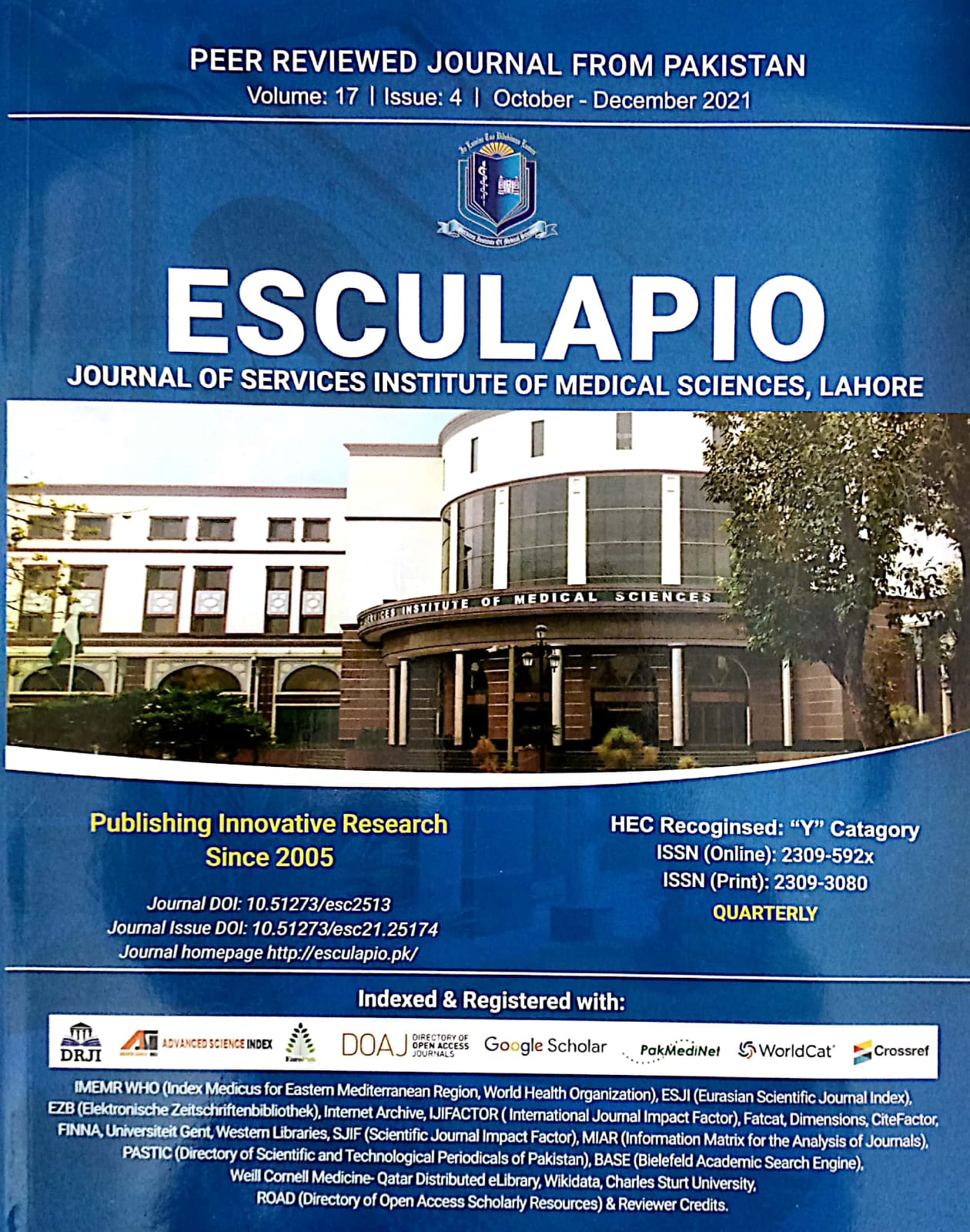Early Deleterious Effects of Right Ventricular Lower Septal Pacing on Left VentricularDiastolic Function in Patients with Preserved Ejection Fraction
DOI:
https://doi.org/10.51273/esc21.251749Keywords:
right ventricular septal pacing, diastole, diastolic dysfunction, dyssynchrony, ejection fractionAbstract
Objective: To determine the effect of right ventricle lower septal pacing on left ventricle diastolic function in patients with preserved ejection fraction (EF).
Methods: This prospective observational study was done at Punjab Institute of Cardiology, Lahore (PIC), Lahore from July to September 2018.After ethical approval, 54 patients who presented in PIC emergency with hemodynamically significant bradyarrthymias requiring temporary pacemaker (TPM) were selected for this study. Baseline echocardiography was performed to measure baseline diastolic function. All patients were then divided into grade I, II & III diastolic dysfunction. Permanent pacemaker (PPM) was implanted positioning the pacemaker lead in lower septum. After 3 months, a follow up echocardiography was done to
see the effect of pacemaker stimulation at lower septum on diastolic function.
Results: Mean age of the patients was 55.13+12.92 years. There were 29 (53.7%) males and 25 (46.3%) females. Diabetes Mellitus was present in 19 (35.18%) & Hypertension in 31 (51.4%) patients. 11 (20%) patients were smokers. Baseline echocardiography showed 46 (85.1%) patients had normal diastolic function, 7 (13%) patients with Grade 1 and 1 (1.9%) patient had grade II diastolic dysfunction. No patient had grade III diastolic dysfunction. After 3 months of right ventricle permanent pacemaker stimulation at lower septum, diastolic dysfunction was found in 40 (74.07%) patients. 16 (29.6%) patients had grade I, 21(38.9%) patients grade II, and 3 (5.5%) patients showed grade III diastolic dysfunction. Frequencies of grade-I and grade-II diastolic dysfunctions were statistically higher at the follow-up of three months (p =0.034 & <0.0001 respectively).
Conclusion: In patients with preserved EF, right ventricular lower septal pacing is associated with deterioration of left ventricular diastolic function.










